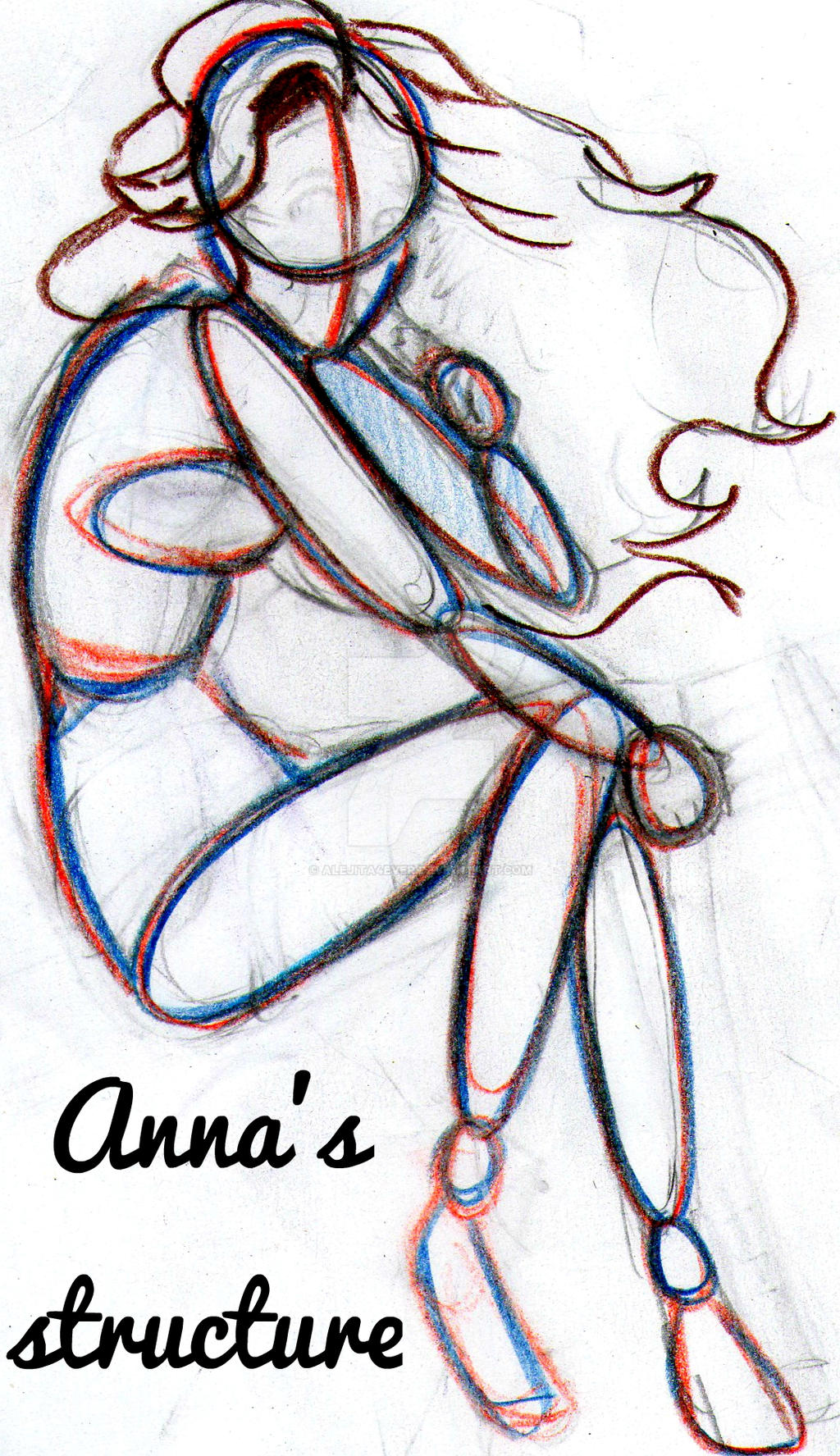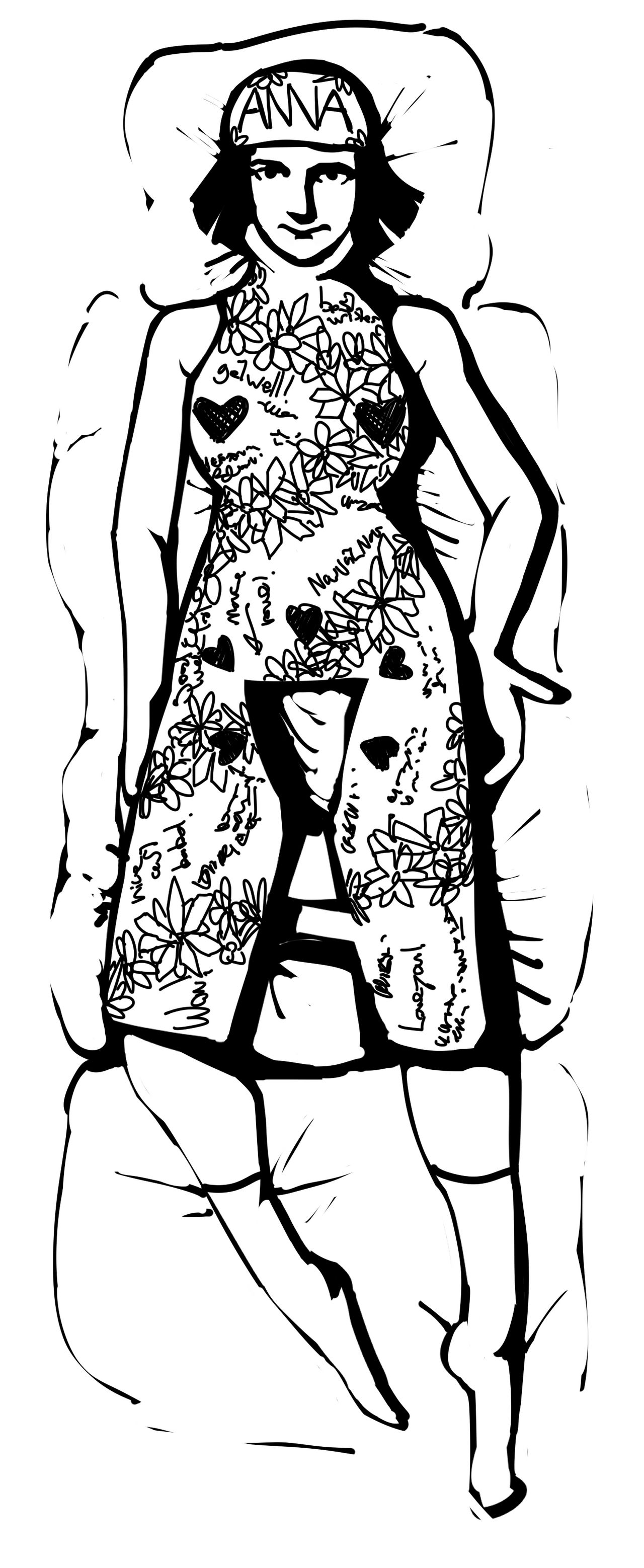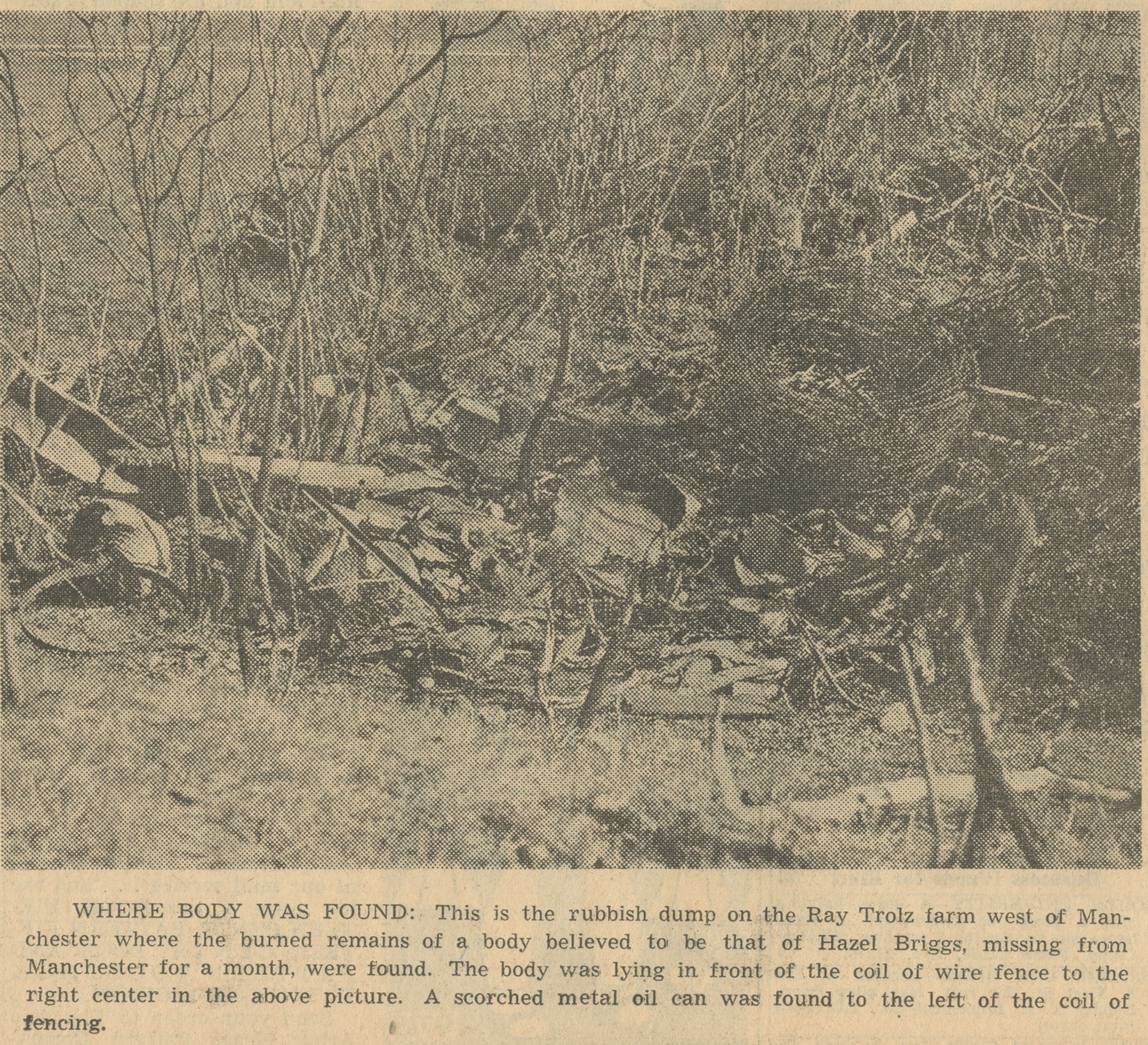Who Found Anna's Body? Unraveling The Discovery And Early Clues
The discovery of Anna's body marked a somber turn in a puzzling situation, leaving many people wondering about the circumstances. It's a question that naturally comes up when a life ends so unexpectedly, and the details surrounding such an event often become central to understanding what truly happened. As of today, July 23, 2024, the initial moments after her body was found provide a crucial starting point for investigators trying to piece together a complex puzzle.
The initial report of Anna's death, as it came to light, pointed to a specific individual making that very difficult discovery. Knowing who found her, and when, sets the stage for the entire investigation that follows. This information helps to establish timelines and provides the first eyewitness account of the scene, which is, you know, incredibly valuable.
This article will look into the details provided about Anna's discovery, exploring the first accounts and the immediate steps taken by authorities. We'll also touch on some of the early evidence that emerged from the scene, giving us a clearer picture of the initial findings, so it's almost like being there.
- Do Jules And Josh Get Married In Twisted Lies
- Was Michael Bubl%C3%A9 Married To Emily Blunt
- How Many Lawyers Does Mcdermott Will Emery Have
- Is Bret Baier Married
- What Is Jules Coding
Table of Contents
- Anna Garcia: A Brief Overview
- The Discovery of Anna's Body
- Initial Scene Observations
- Early Investigative Steps
- Key Individuals and Early Connections
- The Medical Examiner's Role
- Frequently Asked Questions
- What Happened Next?
Anna Garcia: A Brief Overview
Anna Garcia was a twenty-year-old undergraduate student, a young person with a life that was just getting started. She also worked part-time at the Gentry Science Lab building on campus, which is, you know, a pretty common thing for students to do. Her life, unfortunately, came to an abrupt end, leading to a thorough investigation into the circumstances of her passing.
Personal Details and Bio Data
Here's a quick look at some personal details about Anna Garcia, as noted in the reports:
| Name | Anna Garcia |
| Age | 20 years old |
| Occupation | Undergraduate student, part-time worker at Gentry Science Lab building |
| Height | 5ft 6in |
| Weight | 135 lbs |
The Discovery of Anna's Body
The moment Anna's body was found is a critical point in this whole situation, as it sets off a chain of events that lead to a full-scale investigation. It's often the first solid piece of information in a case like this, and, you know, it provides the initial scene for forensic analysis.
- How Many Times Has Sandra Howard Been Married
- Who Is Sandra The Singer Married To
- Who Is The Best Singer In The World
- Who Is Still Together From Love Is Blind
- How Much Is It To Hire Leonardo Dicaprio
Who Made the Discovery?
The official report from the scene clearly states that a friend, Taylor Diaz, found Anna's body. This is a very significant detail, as Taylor Diaz is the person who would have provided the first account of what they saw. It's a rather difficult thing for a friend to go through, finding someone they care about in such a way.
Taylor Diaz also reported Anna Garcia dead at 10:00 a.m. on August 23rd, which, you know, establishes the time of the discovery itself. This initial report is crucial for setting up the timeline for the entire case.
Where and When Anna Was Found
Anna's body was found in a remote logging road in Alsea, Benton County, Oregon, which is a pretty specific location. This happened the day after Easter, so that gives a general timeframe for the discovery itself. The fact that it was a remote logging road suggests a certain level of isolation, which, you know, can sometimes complicate investigations.
She was found at 10:00 a.m. on August 23rd, as reported by Taylor Diaz. This time stamp is important for understanding the immediate aftermath and the beginning of the investigative process. The location and time are, in a way, the foundational facts of the case.
Initial Scene Observations
When a body is found, the initial observations at the scene are incredibly important for gathering early clues. These first details can guide the entire investigation and help determine what kind of forensic work needs to be done. It's, like, the very first look at the puzzle pieces.
External Injuries and Evidence
Anna Garcia was found lying face down on the ground, which is a detail that provides a picture of her position at the scene. There were external injuries on her face, including blood spatters, which is a significant piece of evidence right away. Blood spatters can, you know, tell a story about what might have happened.
Beyond the injuries, other pieces of evidence were noted on her body. Fly eggs were present, which can be useful for forensic entomologists in estimating a time frame for when the body was left at the location. Many other pieces of evidence were also found, suggesting a thorough initial examination of the scene.
Forensic Examinations Begin
The medical examiner was given the first task: to analyze all evidence on her body and from the scene and determine an accurate time of death. This is a crucial step in any death investigation, as the time of death helps narrow down the window of when the events leading to her passing might have occurred. It's, you know, a very scientific process.
Evidence was analyzed at the scene, which included hair, fingerprints, blood, and digital footprint logs. These are all standard types of evidence that investigators look for, and they can provide very important leads. The collection of these items at the scene is, in some respects, the backbone of the entire forensic process.
Early Investigative Steps
After the initial discovery and scene assessment, investigators move quickly to gather more information. These early steps often involve specialized forensic techniques and a broader search for clues, you know, beyond just the immediate area where the body was found.
Luminol Testing in the Apartment
Two days after Anna's body was found, Nebraska state lab technicians performed a luminol test in her apartment. Luminol is a chemical substance that makes drops of blood hemoglobin glow in the dark, even if the blood had been washed away or has faded. This test is used to detect hidden blood, which, you know, can reveal previous activity in a location.
The use of luminol in her apartment suggests that investigators were looking for signs of struggle or other events that might have occurred there before her body was moved. It's a very specific tool used when there's a suspicion of cleaned-up evidence.
Digital and Physical Evidence at the Scene
Beyond the luminol test, other forms of evidence were carefully collected and analyzed. Evidence analyzed at the scene included hair, fingerprints, blood, and digital footprint logs. These elements can link individuals to the scene or provide insights into activities leading up to the discovery. Digital evidence, in particular, can be very revealing about movements or communications.
For instance, Anna's fingerprint was found on an overturned flask, and a note had Eric's fingerprint. Eric's hair was also found at the crime scene. Blood found at the crime scene was blood type A. People who have blood type A are Anna Garcia, Eric Piedmont, and Dominique Hall. These specific details, you know, start to build connections between people and the scene.
Strands of hair were found on Anna's body, and Anna Garcia's hair was also found at the scene. This confirms her presence but also opens the door to identifying other individuals through hair samples. Digital evidence captured information related to Anna, which, in a way, provides a timeline of her recent activities.
Key Individuals and Early Connections
As the investigation unfolds, certain individuals naturally become points of interest, especially those who were close to Anna or connected to the scene. Their roles and relationships are, you know, carefully examined to understand the broader context.
Taylor Diaz: The Friend Who Reported
Taylor Diaz is a very important figure in this case because they were the one who found Anna's body and reported her dead. This means Taylor Diaz provided the first direct account to authorities. Their statement would have been crucial for establishing the initial facts and setting the direction for the early stages of the investigation.
Eric Piedmont: Anna's Boyfriend
Evidence collected at the scene, including hair, fingerprints, blood, and digital footprint logs, points to the involvement of Eric Piedmont, Anna's boyfriend, at the scene. This is a very significant development, as it directly connects him to the location where Anna was found. His fingerprint was found on the note, and his hair was also found at the crime scene.
The presence of Eric's hair and fingerprint at the scene, along with the fact that his blood type (Type A) matches blood found there, makes him a person of significant interest in the investigation. These pieces of evidence, you know, suggest he was there at some point.
The Medical Examiner's Role
The medical examiner's office plays a vital role from the very beginning of a death investigation. Their findings are, you know, absolutely critical for understanding how someone died and when.
The medical examiner's first task was to analyze all evidence on Anna's body and from the scene to determine an accurate time of death. This involves a detailed examination of the body and any materials collected from the surrounding area. The medical examiner also determined the cause of death, which is, obviously, a central piece of information for the investigation.
Understanding metabolism, metabolites, tissues, and ingested chemicals is part of the forensic toxicology lab's work, which assists the medical examiner. Metabolism is the process by which tissues in the body transform ingested chemicals into many metabolites. This kind of analysis can help identify substances in the body, which, you know, might be relevant to the cause of death.
A question was raised about what pill was found in Anna's body, suggesting that forensic toxicology was indeed part of the examination. Identifying any substances in her system would be, in a way, another key piece of the puzzle for the medical examiner.
Frequently Asked Questions
Who was the first person to report Anna Garcia's death?
Anna Garcia's friend, Taylor Diaz, was the one who reported her dead at 10:00 a.m. on August 23rd. This initial report was, you know, the starting point for the investigation.
What specific evidence linked Eric Piedmont to the scene?
Eric Piedmont's fingerprint was found on a note at the scene, and his hair was also found there. Additionally, blood type A was found at the crime scene, and Eric Piedmont is one of the individuals known to have this blood type. These pieces of evidence, in some respects, connect him to the location.
Where exactly was Anna Garcia's body discovered?
Anna Garcia's body was discovered in a remote logging road located in Alsea, Benton County, Oregon. This happened the day after Easter, which, you know, helps to pinpoint the timing of the discovery.
What Happened Next?
The discovery of Anna's body and the immediate collection of evidence set the stage for a deeper investigation. The information gathered from the scene, the luminol tests, and the medical examiner's findings all contribute to building a comprehensive picture of what occurred. Understanding these initial steps is vital for anyone trying to make sense of the situation. You can learn more about forensic science on our site, which, you know, helps explain how these types of investigations proceed.
The presence of specific evidence, like fingerprints and hair, helps investigators narrow down potential individuals involved. For example, the case of Ana Walshe, where remains were allegedly thrown in trash bags and incinerated, highlights how different cases present unique challenges in finding a body or its remains, and how digital searches for things like "how long before a body starts to smell?" can be part of an investigation, though this is a different case entirely.
This kind of detailed evidence analysis is what helps move a case forward, providing clues that might lead to answers. If you are interested in how crime scenes are processed, you can explore crime scene investigation here, which, you know, gives more insight into the process. The process of gathering and analyzing evidence, from blood types to digital footprints, is a complex one, but it is also, very, very important for justice.
It's also worth noting that other cases involving bodies found in water, like the Wisconsin graduate student found in the Mississippi River, Eliot Heinz, or the woman recovered from Lake Anna in Virginia, show that discoveries can happen in many different environments. Each discovery, you know, brings its own set of challenges and specific investigative pathways.
The goal is always to piece together the events, using every bit of information available, to get to the truth of what happened. This involves careful examination of all the evidence collected, and, you know, sometimes going back to re-examine things. For more information on forensic analysis and investigations, you might find resources like the National Institute of Justice's forensics section helpful, as it provides a general overview of the field.
- Who Is Brian Kilmeades Mother
- How Many Children Does Sandra Ali Have
- Who Was Steve Reeves First Wife
- Does Yung Gravy Have Radial Palsy
- Are Alina And Zahide Twins

Anna's Body Structure by alejita4ever on DeviantArt

Anna's Body cast by nasvaznas on DeviantArt

Where Body Was Found | Ann Arbor District Library